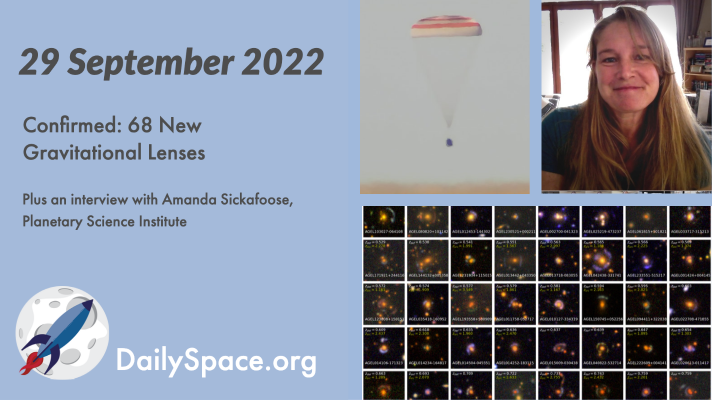
Sep 30, 2022 | Asteroids, Cosmology, Crewed Space, Daily Space, Earth, Guest Interview, Moon, ROSCOSMOS, Soyuz, Space China, Spacecraft, Stars
Using a machine learning algorithm, scientists have confirmed 68 out of 77 potential gravitational lens candidates from a subset of over 5,000 possibilities. Plus, generation one stars, astronauts coming home, dating craters on Earth, lunar glass, and an interview with Amanda Sickafoose regarding the DART mission.
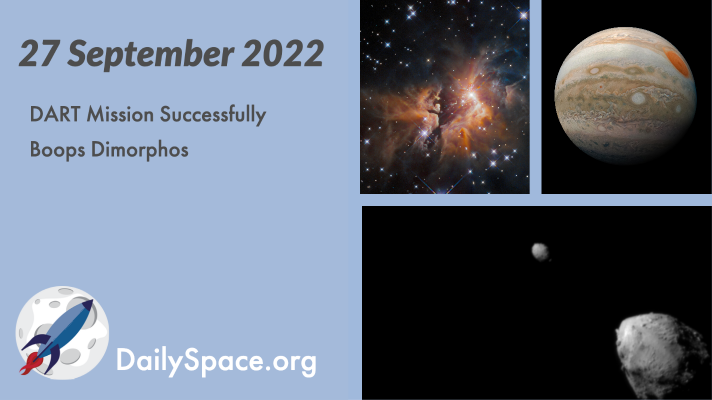
Sep 29, 2022 | Artemis, Asteroids, Cosmology, Daily Space, DART, ESA, Galaxies, Jupiter, Mercury, Moon, Rockets, Science, Spacecraft, SpaceX, Starlink, Stars
After ten months of space travel, NASA’s DART spacecraft arrived at the asteroid Didymos, targeted the moonlet Dimorphos, and successfully flung itself at the surface. Multiple observations confirm that the system brightened and even managed to resolve a cloud of debris. Plus, rocket launches, an update on the SLS, some broken physics, and International Observe the Moon Night.
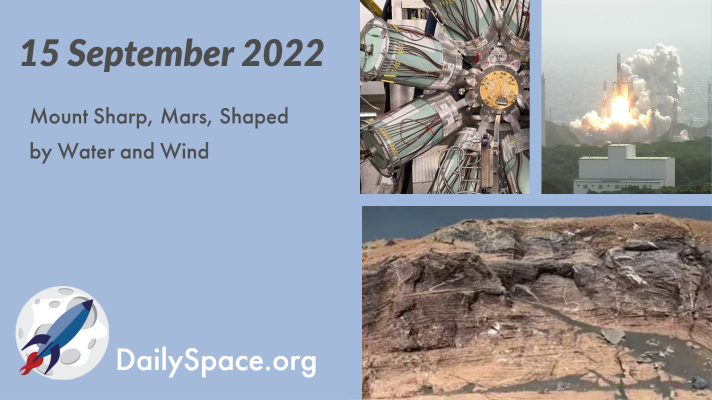
Sep 16, 2022 | Climate Change, Cosmology, Curiosity, Daily Space, Earth, Exoplanets, JAXA, Mars, Moon, Physics, Quantum, Rockets, Space China, Space History, Spacecraft, Supernovae, White Dwarfs
Data and images from NASA’s Curiosity rover found evidence that wind played a key role in erosional processes on the red planet, despite the lower atmospheric volume. Plus, astrophysics and cosmology news, a baby exoplanet, and this week in space history, we look back at an uncrewed lunar mission from Japan.
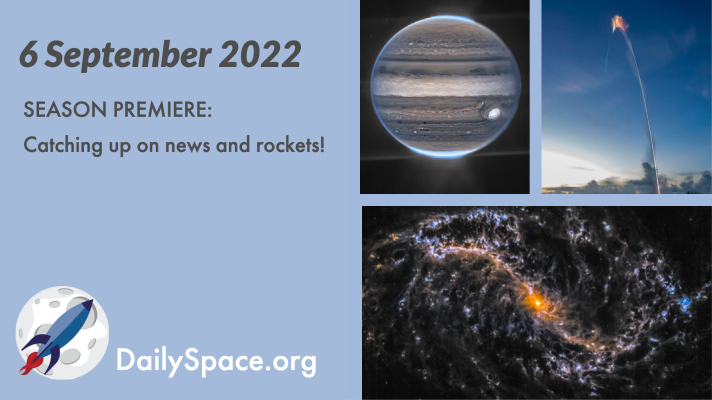
Sep 7, 2022 | Artemis, Blue Origin, Cosmology, Crewed Space, Daily Space, ESA, Exoplanets, Galaxies, ISRO, Jupiter, JWST, Mars, Mars 2020, Perseverance, Rocket Lab, Rockets, Space China, Space Policy, SpaceX, Starlink, Stars, The Sun
As we return from our summer hiatus, we are back with a rundown of some of the stories that came out during the break. On the planetary front, JWST has been taking amazing images and learning about exoplanets. On the astrophysics front, we’ve got stories on dark matter and Betelgeuse. And there were thirty orbital launches, including a whole lot of Starlinks… but not including Artemis.
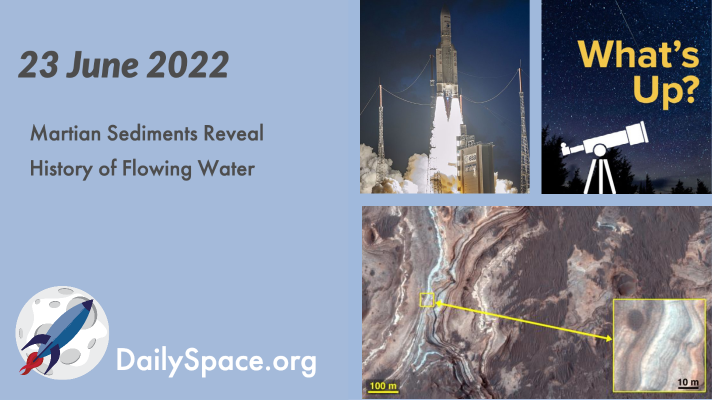
Jun 24, 2022 | Climate Change, Cosmology, Curiosity, Daily Space, ESA, Galaxies, Mars, Neptune, Physics, Rockets, Sky Watching, Spacecraft
A basin region within Margaritifer Terra on Mars contains deposits of clay-bearing sediment that provide evidence of flowing water on the red planet as recently as 2.5 billion years ago. Plus, Mars mission updates, gravitational wave detection, rocket launches, and this week’s What’s Up.
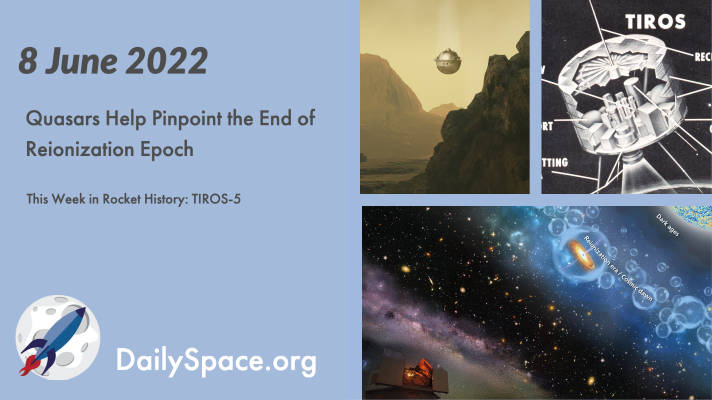
Jun 9, 2022 | Cosmology, Daily Space, Earth, Galaxies, JWST, Mars, Space History, Spacecraft, Venus
Using the radiation signatures of quasars, scientists have determined when the era of reionization ended in our universe – about 1.1 billion years after the Big Bang. Plus, an update on NASA’s MAVEN spacecraft, new Hubble and Chandra images, and This Week in Rocket History is the TIROS-5 weather satellite.








 We record most shows live, on Twitch. Follow us today to get alerts when we go live.
We record most shows live, on Twitch. Follow us today to get alerts when we go live.